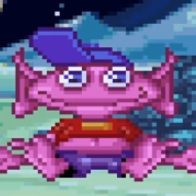I have a stack of SATA hard drives that I need to erase.
I have a USB drive dock, a box that a drive can be set into that connects to my computer via USB-3.
I am using DD to write zeros to the raw device, in this case, /dev/sdf.
No matter the actual size of the drive dd stops at about 3 to 7 gb. These are 300 gb to 3 TB drives.
I am not mounting the drives, but I do ensure they are visible to the system with lsblk. To change drives I turn off the dock. The drive then disappears from lsblk. When I insert a different drive and turn the dock back on again /dev/sdf re-appears.
Are all my drives bad? If they are I will need to have them “professionally” destroyed at about $25 a drive.
idk man, if there’s sensitive data on those drives i’d always err on the side of caution, there are much cheaper ways of doing secure data deletion, you can dismantle a drive with a screwdriver, or core them with a drill (my old worksplace had a hydraulic press they ran batches of drives through)
if you wanted something less intrusive there are bootable images like DBAN (Darik’s Boot and Nuke) that handle secure erasure pretty well, you can enforce multiple passes, and even connect multiple drives at once
if the data isn’t that sensitive I always like trying to unpartition/repartion the drive, then see if you can use dd to fill the drive with zeros/random data
It’s not too sensitive, but since the drives were part of my dad’s estate I want to be sure. I would hate to have to turn these drives (esp the 1+ TB drives) into e-waste.
I prefer
shredfor erasing magnetic drives.ddcan work too, but its options are arcane enough that it’s easy to make mistakes that lead to weird behavior.If that doesn’t fix the unexpected size problem, I would suspect the USB bridge in your dock. Those things are notoriously buggy.
Connecting directly with SATA is a more reliable approach. It also lets you use
hdparmto tell the drive to run a secure erase cycle on itself.Could be a bad dock or usb controller, try a different one. Otherwise just snap the sata connector off, and most people will not bother to get anything off.
Try mounting them. What is the dd command you’re using?
Now, depending on your threat model maybe a drill and a sledgehammer will be enough. If your threat model is rather high and it is really sensitive data, well you’ll have to spend that money if you can’t get zeros written.
I am a private person without any state or corporate secrets in hand. I do not do online banking.
My threat model I believe is limited to random drive-by actors.
I was hoping to be able to provide these drives to others to use, the screwdriver and hammer will render them into E-waste. But on that issue, once the platter assembly is disassembled and the platers are separated and mixed up the data on them is probably not recoverable? With the given that each drive has multiple platters.
A few gigs of zeroes will prevent random drive-bys. At that point the partition and filesystem table of at least the first partition is overwritten and you “can” recover files off it but you’ll be missing filenames and at least half the files will be corrupt due to fragmentation losing track of which files are where.
I agree with Ono that shred is a good tool for this. If you don’t want to use that, try increasing the block size to at least 1M if not 16M to reduce the overhead.



